We’re so excited to show you these white oak hardwood floors because having multiple floor types in the same room can be really frustrating. With so many different floor types, we’re constantly tripping on all of the different levels and textures. And quite frankly it’s just plain ugly.
If you’ve been following along here for a while, you’ve probably seen the series we did on removing the floors. The main floor of our house had vinyl, hardwood and carpet that we had to remove and while some of it was easy (carpets) it was actually a ton of work! For the most part, Kristen did the demo herself which saved us thousands. The saved cash went right back into the house and is helping pay for the installation of the floors because we are not going to take on such a big, back breaking project ourselves.
After much debating and color testing we decided on White Oak Toledo from Floor & Decor. We really wanted something light, but also full of knots and texture so it could stand anything we threw at it. The White Oak will hide scratches that we’ll inevitably make and temporarily cover up dirt and debris. This sounds a little gross, but it’s important to consider. While super dark floors can really pop in a home, they also show every bit of dust on the ground.
For the molding, we chose 9/16” x 5-1/4” White Base molding from Lumber Liquidators. It’s a pretty high base molding, but we really love the crisp look of it. Unfortunately, due to the quantity that we needed and the scarcity of materials available these days, we had to go to two different stores an hour apart to pick it up what we needed. We didn’t have time to have them ship everything to one store… so next time we’ll plan ahead a bit more.
Now, on to reveal day!
Here’s what it looked like before they started working. At this stage, all of the floors had been removed and we were down to the plywood subfloor throughout the entire house.
One side effect of removing walls and cabinets in an older home is the general wear and tear on the existing subfloor. In the “high traffic” areas such as hallways, kitchen, and doorways there are low points in the floor. This ultimately means our floors are completely unleveled. This meant we had three options:
- Remove all of the subfloor and replace it with new plywood. Cost: $$$$
- Put a new layer of plywood on top of the existing subfloor (which would raise the floor a bit) Cost: $$$
- Do nothing and live with the unleveled floors and the understanding that we may need new floors in 20 year. Cost: Free
If you remember back in spring of 2021, a sheet of plywood was close to $90. This means to get enough to cover the whole first floor would have cost us about the same price as the hardwood floors themselves. For that reason we opted to do nothing and live with the unleveled floors that we really didn’t even notice.
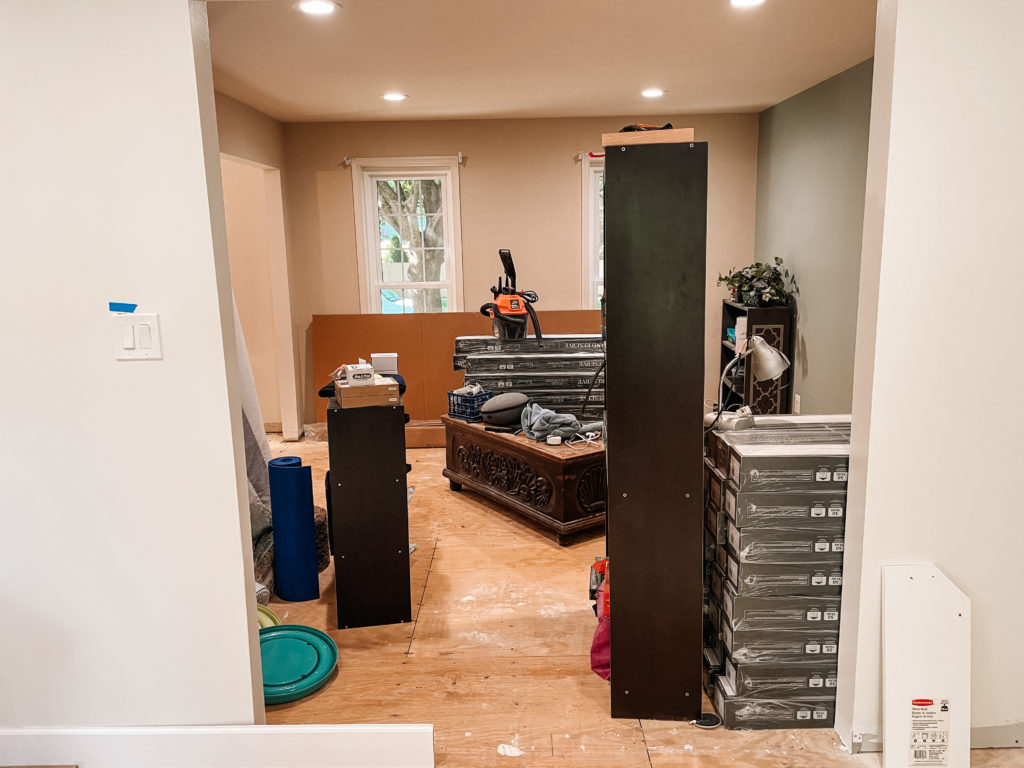
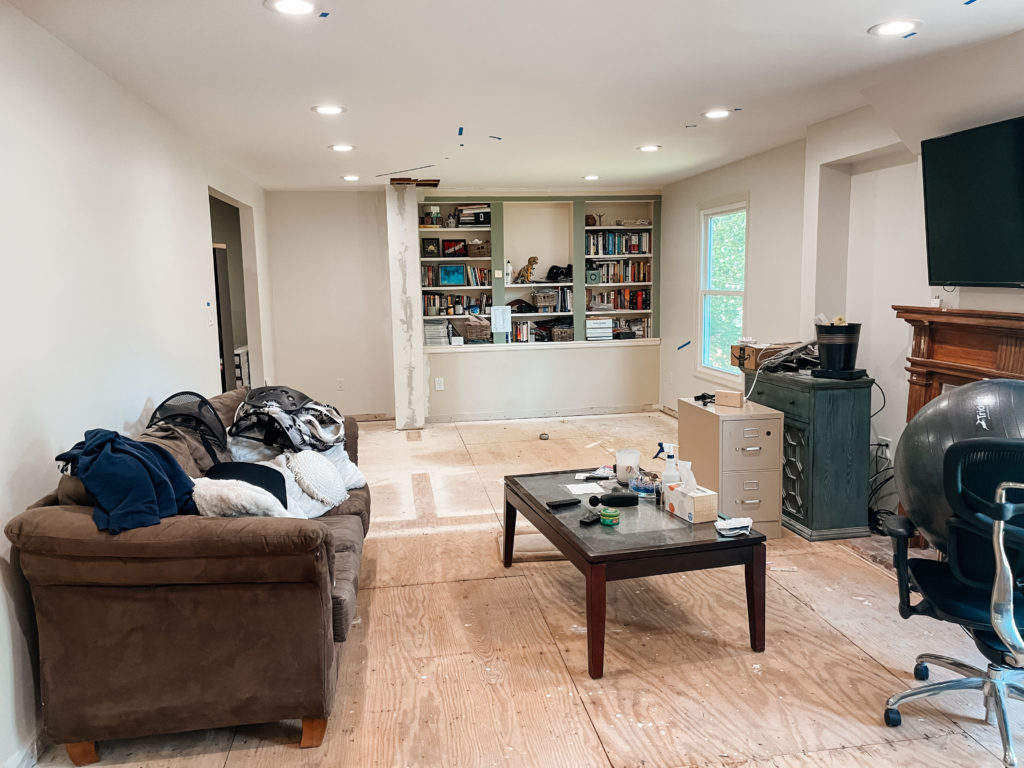
Watching them work was actually pretty fun!
They started by walking around the house testing for squeaks, which we had a lot of. In the squeaky spots, they screwed down the plywood so it was better attached to the floor joists.
A squeaky floor can be caused by a few things:
- The nails holding down the plywood subfloor to the joists have loosened over time and now when you step on the subfloor, the plywood rubs against the nail causing the squeak.
- If you have a type of floor that’s nailed down, it could have loosened from the subfloor causing gaps. When you step on the wood, it rubs against the nail causing a squeak.
- Low humidity in the air could have made the boards shrink and therefore putting pressure on the nails.
After they fixed as many squeaks as they could, they laid down the underlayment paper and then started to line up the pieces making sure they’ll all fit properly and inspecting each piece to make sure they’re all in good condition. Having large sections pre-laid out made nailing the floors down pretty quick.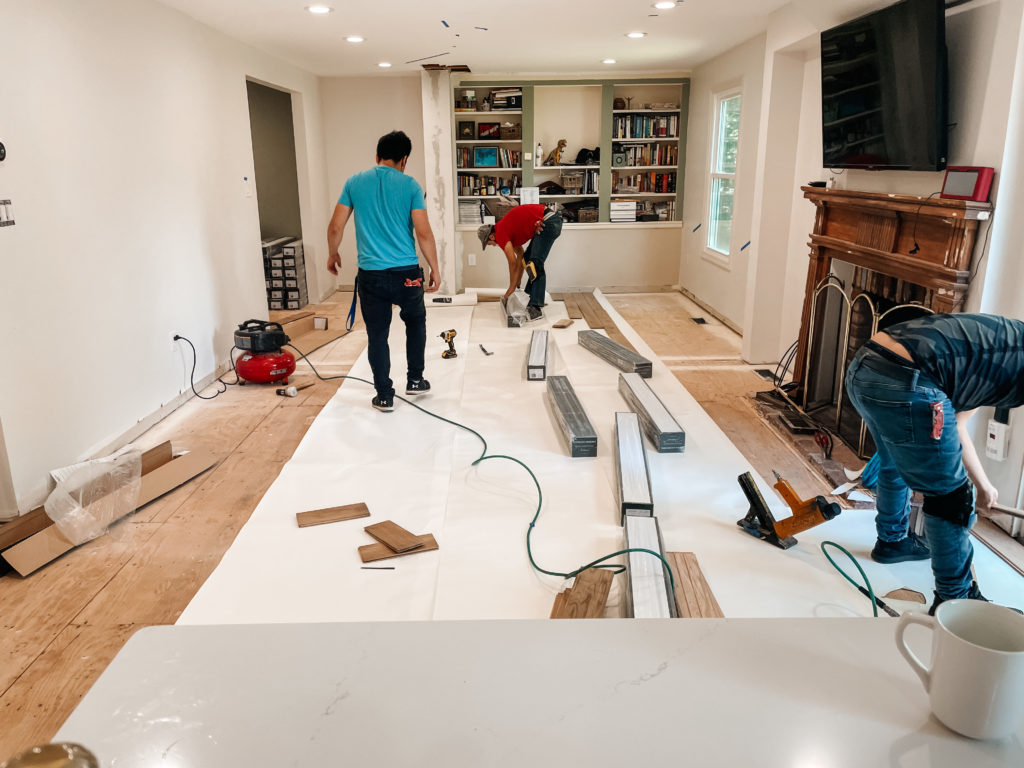
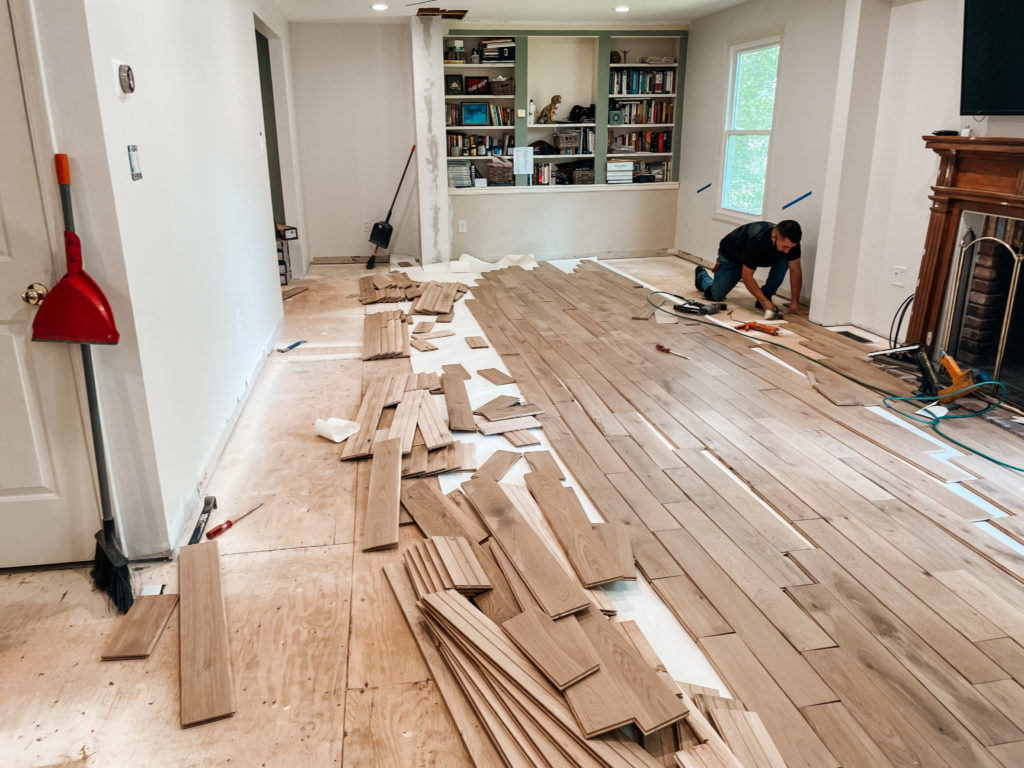
Before a single piece was nailed down, they had us review the laid-out pieces to make sure we approved them. Kristen did end up having them replace a bunch of pieces because either the color didn’t match well or had odd looking markings. They quickly caught on and didn’t use those types of pieces for the rest of the install.
Then they started installing the white oak hardwood floors!
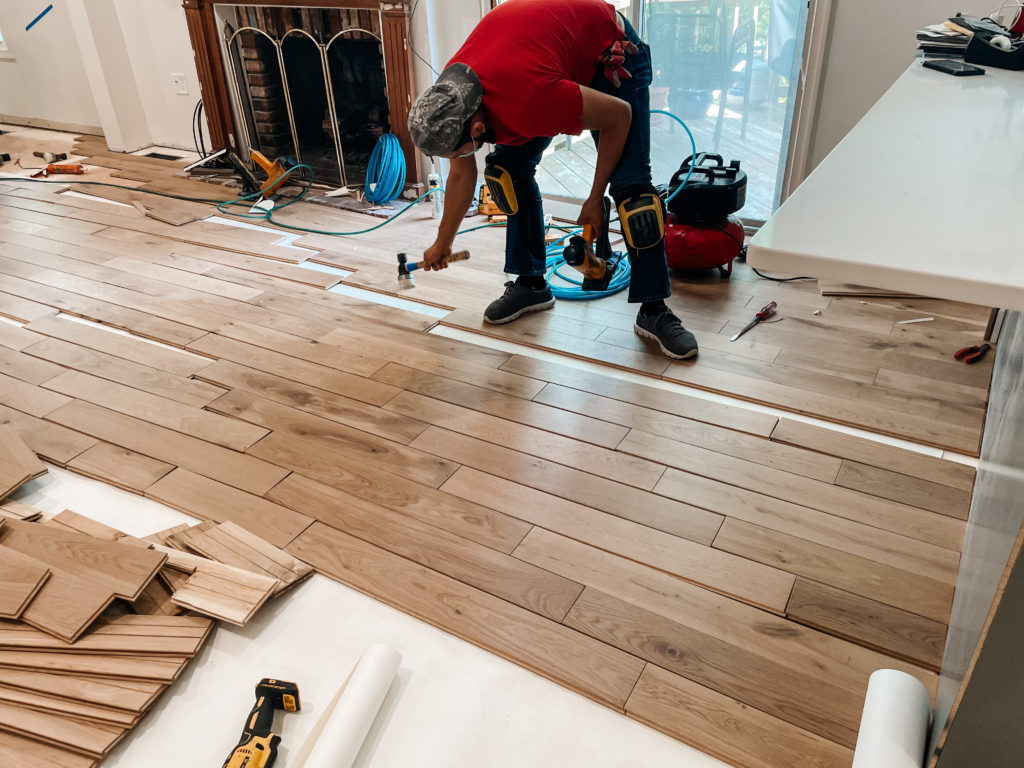
One thing that was important during the install was how the flooring around the 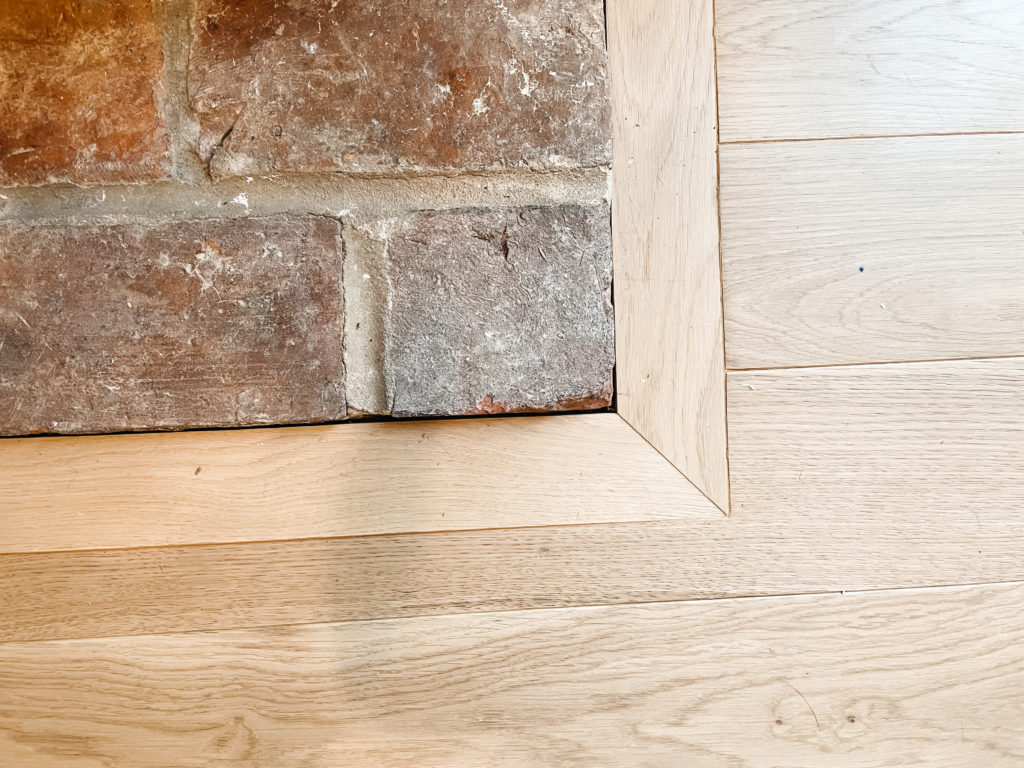 mantle was installed. We had the option between adding molding or in-laying the wood. We really liked the look of the inlay which is what it looked like before. So even though it took a little bit longer, we went with that option.
mantle was installed. We had the option between adding molding or in-laying the wood. We really liked the look of the inlay which is what it looked like before. So even though it took a little bit longer, we went with that option.
Each plank then got nailed by hand and the whole install took about 3 days including the new white molding around the house.
We were so excited to have the same floor everywhere! This was a major step for us and it’s the first time in a year that we can walk across the house without walking on four different floor heights and textures. We’re so happy with the results and it was worth the time picking out the perfect floor.
Now we just need to wait until our new couch gets here in September so we can finish out the design part.
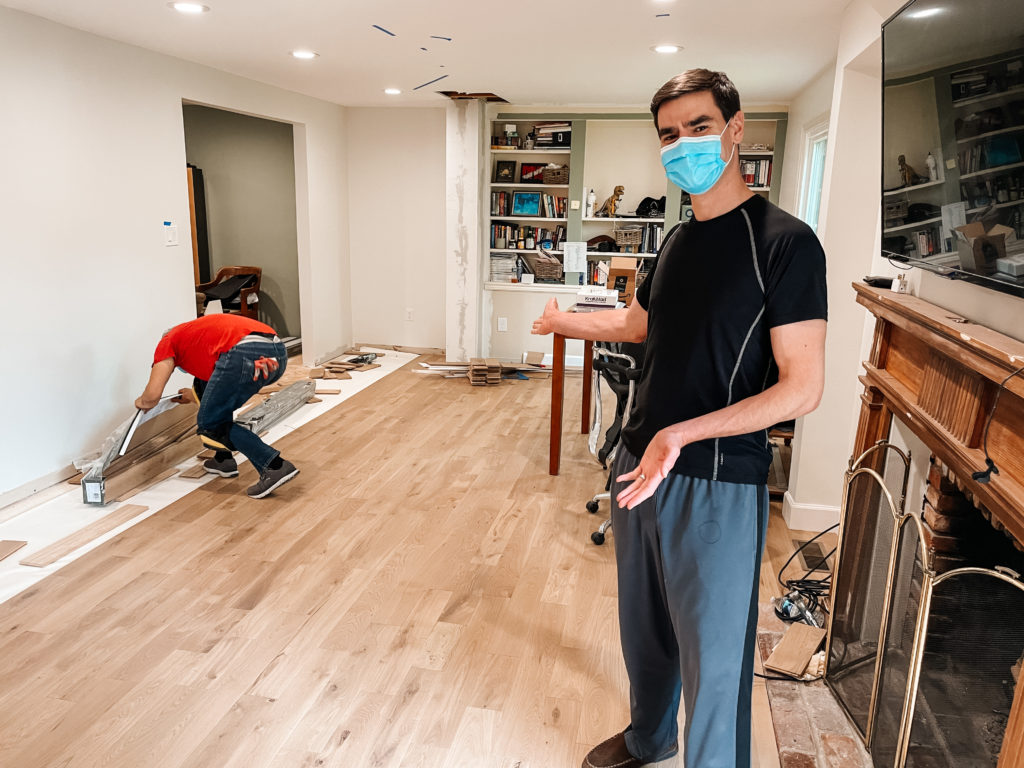
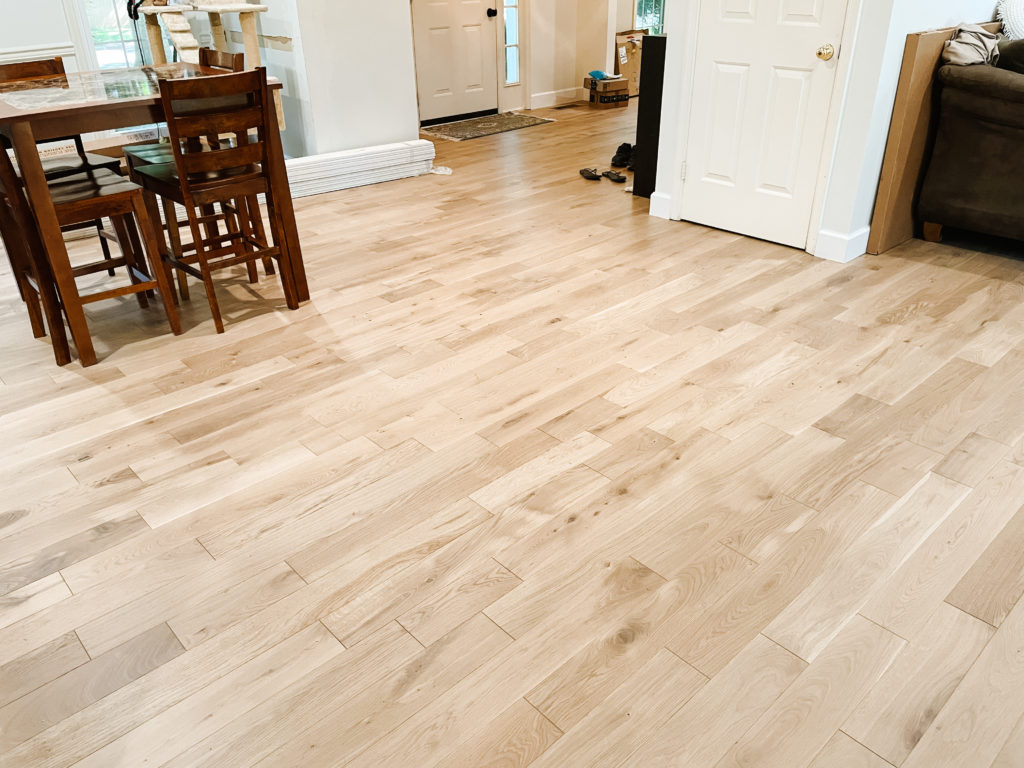
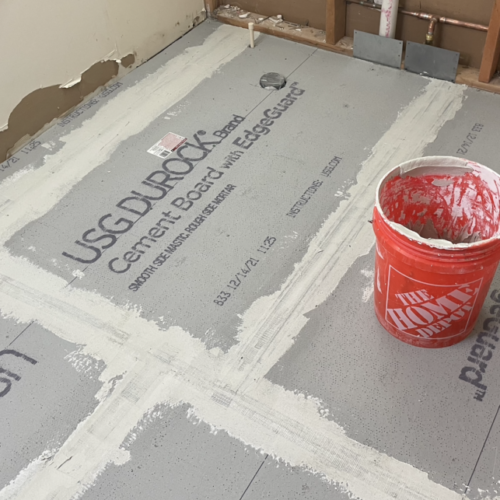
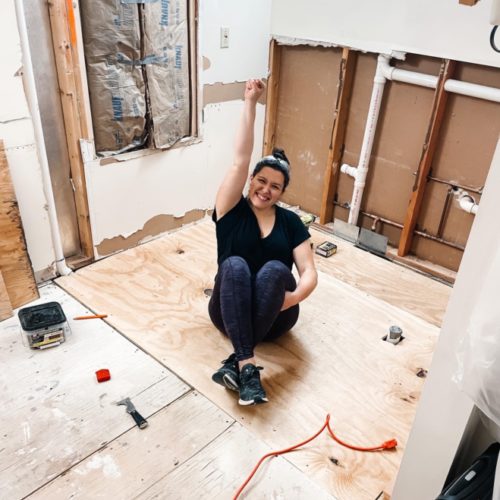



Leave a Reply